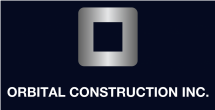More strength and potential for lower costs let metal framing shine
Metal framing is a fast-growing alternative to traditional wood framing. Your contractor must know the differences and characteristics of both of these construction techniques. Inexperienced installers can lead to long-lasting problems with your project.
Also known as cold-form steel framing, interior metal framing was developed for use in areas with high-wind and seismic dangers. The steel connections have extra holding power for these type of applications.

Metal framing’s fireproof characteristics, resistance to insects, and stability have resulted in increasing popularity in commercial and even home construction. Its zinc covering also makes it corrosion resistant.
It is a green material as well. On average up to 25% of the raw material is recycled, and 100% of it is recyclable. Up to 40% of commercial buildings have metal framing.
What is metal framing exactly?
Metal framing is sheet steel fabricated to sizes matching those of wood construction materials. Shaped by sending it through a series of rollers to “bend” it into the final shape of it posts and channels, its dimensions include 2×4, 2×6, 2×8, etc.. Since the shaping takes place without heat the material ends up being stronger than the original sheet steel.
Studs and track
Again the sizes match the wood framing used in construction for years. Unlike wood, it comes in a variety of thicknesses for light or heavy applications. Primary studs are 25-gauge steel and for stiffer and taller walls, a 20-gauge stud is used.
Standard U-shaped channels or track have one 1/4-inch tall sides and replace the top and bottom pieces used in wood framing. They are nailed or screwed to the floor and ceiling. The studs sit in the tracks and attach to them.
When should you use metal framing?
When you need lower costs
Besides the advantages listed above, metal framing is about 60% lighter than wood. Installers use less physical effort installing it. This lower weight helps reduce labor and healthcare expenses with a benefit to the overall project cost.
Since the product is “truer” it is easier to install, and this lowers labor costs as well. Since the wall stays firmly in place, there are no “screw pop-outs” associated with the drywalling. Warranty callbacks don’t occur due to seasonal settling. The predrilled holes to run wiring are also labor savings.
Material costs can be lower as the improved quality results in less scrap and the expenses associated with disposing of it. You can also install metal framing 24 inches on center versus 16 for wood.
There are even lower risk insurance costs associated with metal framing.
When you want to appeal to end-users
The benefits of metal framing assist with marketing to end-users. This assistance is especially true for its resistance to rot, mold, and insect infestations. Since there are no emissions associated with metal framing air quality can be touted. As noted before the material is recycled to some degree and recyclable. Safety advantages like fire resistance and structural stability appeal to end-users as well.
These characteristics appeal to owners, renters, and landlords alike.
